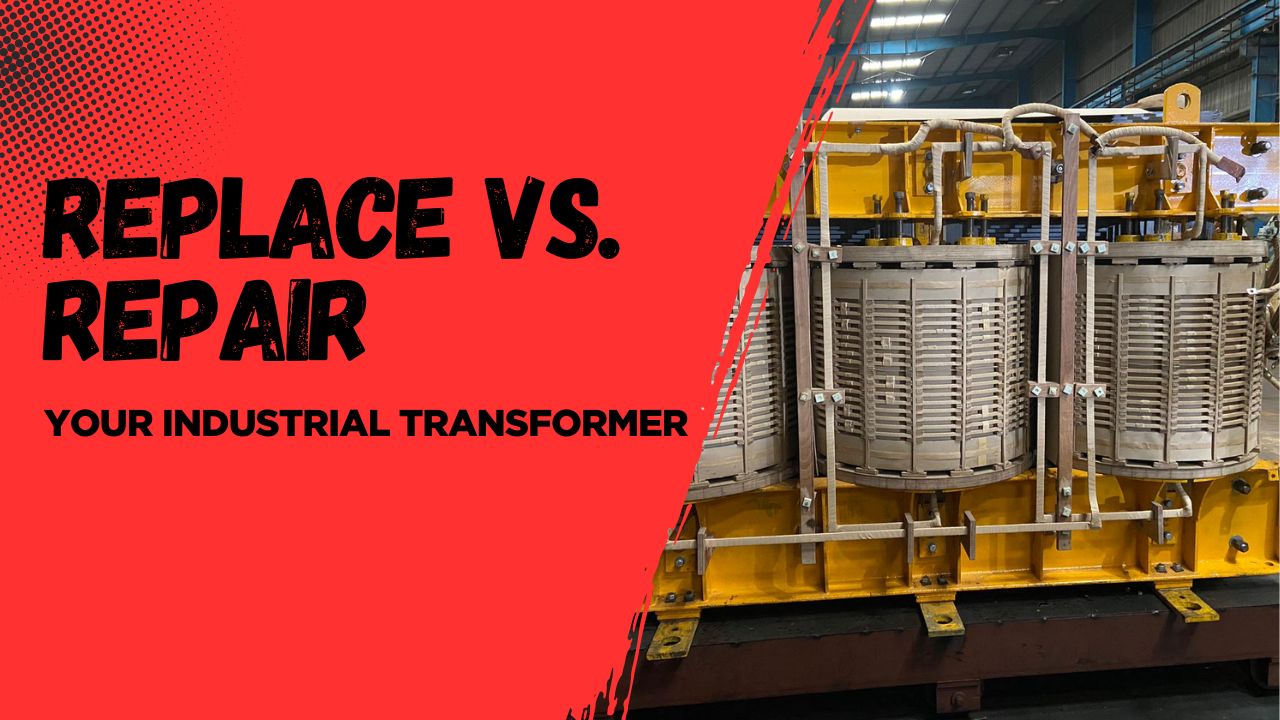Transformer failures create expensive emergencies. Production stops. Workers stand idle. Every hour costs thousands in lost output. Yet rushing to replace a transformer might waste money when repairs could solve the problem.
The right decision depends on multiple factors—age, damage extent, repair costs, and downtime length. Smart evaluation of these factors prevents unnecessary expenses.
Here’s what you need to think about when deciding whether to repair or replace your industrial transformer:
Age and Condition Assessment
Old
power transformers aren't automatically candidates for replacement. A well-maintained 30-year-old transformer might run perfectly, while a neglected 10-year-old unit fails early.
Physical inspection reveals tank condition, bushing integrity, and connection quality.
Oil testing shows internal health through dissolved gas analysis. Winding resistance measurements detect deterioration.
These tests help determine the remaining useful life. Regular maintenance records provide insight into deterioration patterns.
Failure Mode Analysis
The type of failure often determines repairability. Lightning strikes might damage only the external bushing, an easy repair.
Internal winding shorts usually require extensive rebuilding. Partial discharge deterioration indicates widespread insulation breakdown.
Core problems from severe overloading might make repairs impractical. Moisture contamination requires complete teardown and drying.
Careful diagnosis identifies contained versus widespread damage.
Cost Comparison
Repair versus replacement calculations must include all factors. Quick repairs might cost less initially but lead to repeated failures.
New transformers eliminate uncertainty but require large capital investment. Installation costs affect both options—rigging, connections, testing.
Production losses during downtime often exceed equipment costs. Available repair facilities influence turnaround time. Factory warranties provide long-term security for new units.
Performance Requirements
Changed operational needs influence the decision. Original transformers might not match current power quality requirements. Modern equipment needs better voltage regulation.
Energy efficiency improvements might justify replacement. Power system changes could require different ratings.
New safety standards might mandate
modern protection features. Future expansion plans affect capacity requirements.
Availability Factors
Lead time determines many decisions. Standard replacement units might ship immediately.
Custom transformers take months to manufacture. Local repair shops reduce transportation time.
Emergency repair services work faster than full rebuilds. Temporary rental units bridge long lead times. Critical spares eliminate rushed decisions. Supply chain disruptions affect both options.
Regulatory Compliance
Environmental regulations affect repair decisions. PCB contamination requires specialized handling procedures.
Oil disposal follows strict environmental guidelines. Modern units contain environmentally friendly materials. Older designs might not meet current efficiency standards.
Documentation requirements differ for repairs versus replacements. Updated safety features might mandate replacement.
Compliance costs influence the final decision.
Space and Installation Constraints
Physical constraints limit repair options. Modern replacements might not fit existing spaces. Foundation requirements could differ for new units.
Existing cable entries might not match new designs. Ventilation requirements change with newer designs. Access routes affect both repair equipment and replacement units.
Building modifications add hidden costs. Site conditions influence installation methods.
System Integration
Power system changes complicate decisions. Protection coordination might need updating. Modern controls might not interface with old systems.
Smart grid features require newer technology. Existing monitoring systems need compatibility. Power quality requirements evolve with new equipment.
System grounding changes affect transformer selection. Future automation plans influence equipment choice.
Final Thoughts
Each transformer situation requires individual evaluation. Our
transformer repair facilities handle everything from minor repairs to complete rebuilds of units up to 132 kV class.
When replacement makes more sense,
Makpower manufacture new units matched to current requirements.
Available rental units keep production running during either process. This complete service approach helps you make cost-effective decisions while minimizing downtime.

